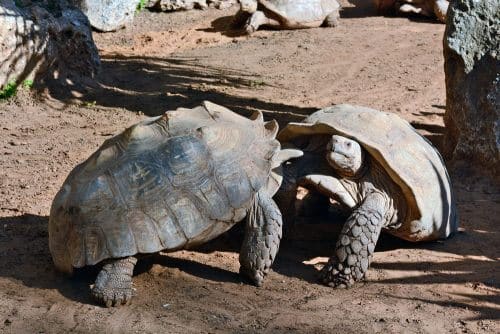For the first time in Israel, the common land turtle is the recipient of a scientific study in which PhD student Mai Bernheim Chaimovich from the Department of Evolutionary and Environmental Biology discovers that even the little we thought we knew about our armored friend is not accurate. "If you see a turtle, don't pick it up, even if it seems to you that you are saving it from its shell. The turtles are more ancient than the dinosaurs and they have their own ways of surviving," she said

In Israel, it sleeps in the summer and not in the winter as the experts believed; Unlike his violent brothers, he is really not territorial and global warming threatens to throw him out of balance, which threatens his continued existence. For the first time in Israel, the common land turtle is the recipient of a scientific study in which PhD student Mai Bernheim Chaimovich from the Department of Evolutionary and Environmental Biology discovers that even the little we thought we knew about our armored friend is not accurate. "If you see a turtle, don't pick it up, even if it seems to you that you are saving it from its shell. The turtles are more ancient than the dinosaurs and they have their own ways of surviving," she said.
To this day, the common land turtle, which is common throughout the Mediterranean basin, has hardly been studied in Israel and the knowledge we had about it was taken from studies done on it mainly in Europe. In her research work for her master's degree, under the guidance of Prof. Uri Shains, which is still in progress as part of her third degree, Bernheim Chaimovich discovered that there are quite a few differences between the Israeli species and its brothers overseas.
The first task in her research was to find out the whereabouts of the turtles - not an easy challenge in light of the fact that turtles are seen less and less in our area due to urbanization processes and the fragmentation of natural areas. After quite a bit of detective work in the Ramat Hanadiv gardens, the researcher found 200 individuals, and placed transmitters on 18 of them: 8 females and 10 males, who gave her data about their activities. From the data, she built a model that predicts the habitat areas preferred by the turtles: areas where there is a heterogeneous composition of vegetation, varying in height, but where there are patches of soil exposed to the sun where the turtles can warm up when needed. The turtles themselves can be found at the edges of the bushes in those areas, probably because of the stable conditions in the area of the bush that protects against extreme changes in weather and winds.
During the research, the researcher discovered some surprising data about the turtle. As a creature with a body temperature similar to the ambient temperature, the turtle depends on weather conditions to regulate its body temperature. Therefore, it could be expected that the turtle would go into "hibernation", as turtles of this species usually do in Europe. Surprisingly, however, the Israeli winter did not make the turtles sleepy, and the Israeli summer did so." The studies on turtles of this species were carried out in countries where the temperatures drop in a way that justifies the cessation of activity, but in its area of distribution in Israel, the temperatures do not always reach a low that requires the cessation of activity. With us, as it turned out, in the summer months between July and October there was almost no activity and the peak of activity was actually recorded in the winter, between January and April (2014), so the local conditions are ideal for mating", she noted.
It also became clear that unlike other turtle species in the world, some of which are territorial and violent, especially during mating, the Israeli turtle is not violent or territorial, and the researcher even found many places of overlap between the habitats of her research turtles.
Another finding that came up in the master's thesis is that determining the sex of the offspring (the sex) is determined by the incubation temperature of the eggs, where at temperatures above 30.5 degrees Celsius (under constant laboratory conditions) mainly females develop and below it mainly males.
Now, in her doctoral thesis, the researcher tries to answer questions related to the reproduction of the species. One question is how the temperature in natural nests, where there is a range of temperatures, affects the development of matings. Questions like this have implications for the future of the land turtle in Israel. "At the benefactor level I found that the ratio between males and females is 1:1. If the temperature does determine the sex of the offspring, the constant increase in temperatures that we have witnessed in recent years can cause a bias in the mating ratio, which will make it difficult for the turtle to reproduce and continue to exist," explains the researcher.
Tags: Department of Evolutionary and Environmental Biology, May Bernheim Chaimovich, Prof. Uri Sheins, turtles

One response
I enjoyed and learned from the article. These days we started tracking the turtles at Tel Michal in Herzliya and were surprised that over the course of several weeks we already found 13 live individuals and several dead ones. We number them with a black marker on the back. The article is really eye-opening. Thank you. Shlomit Lifshitz